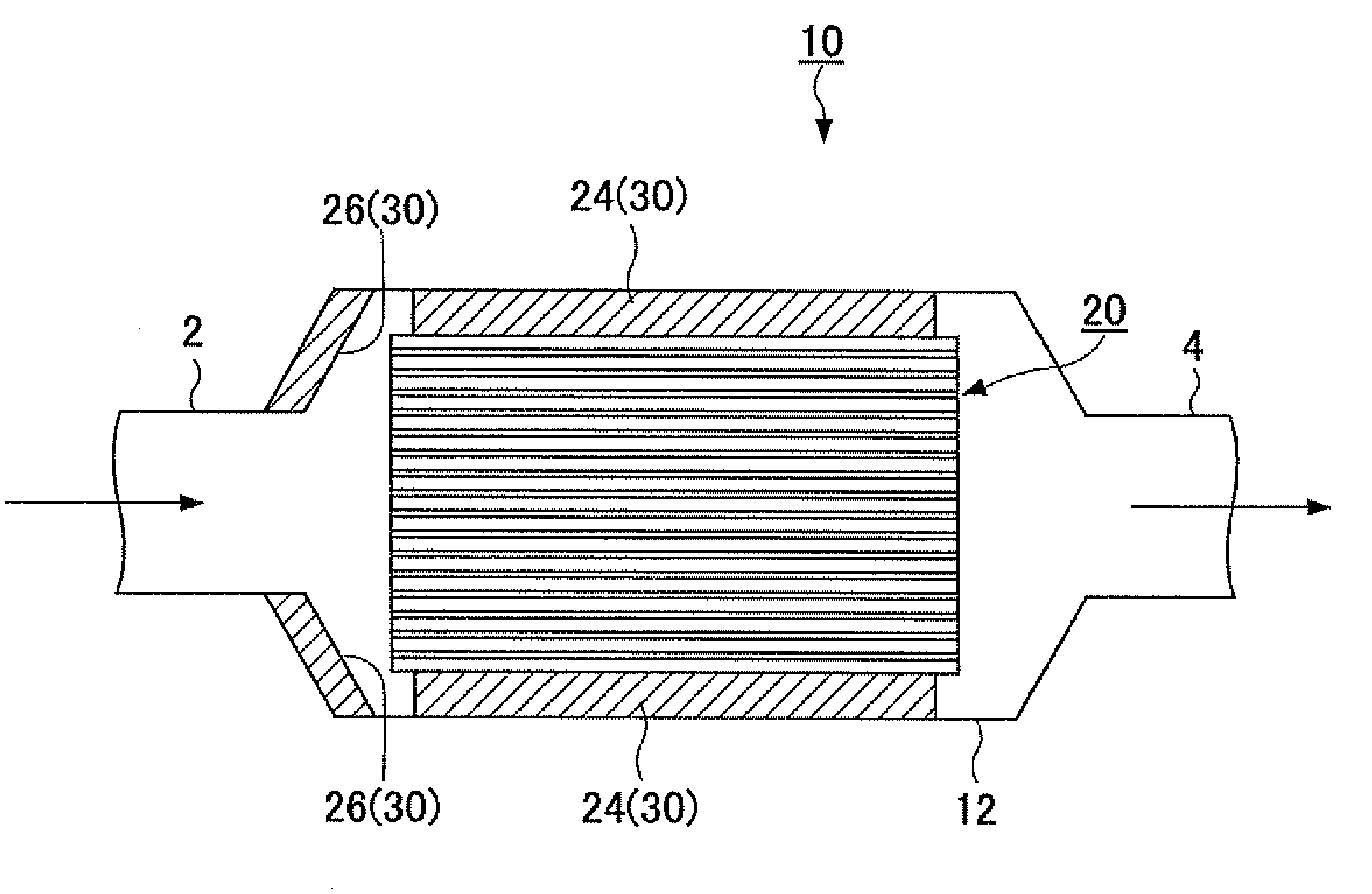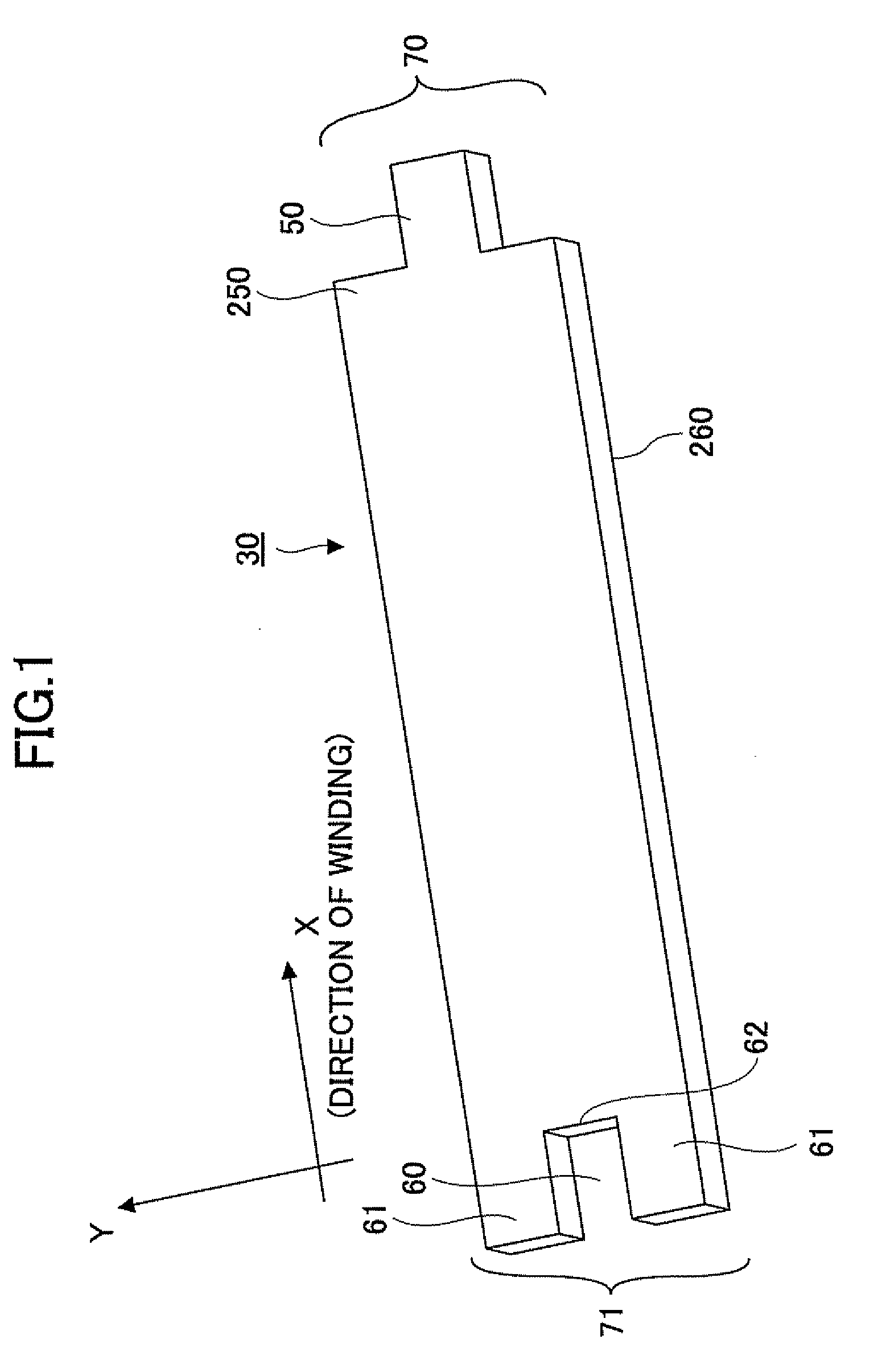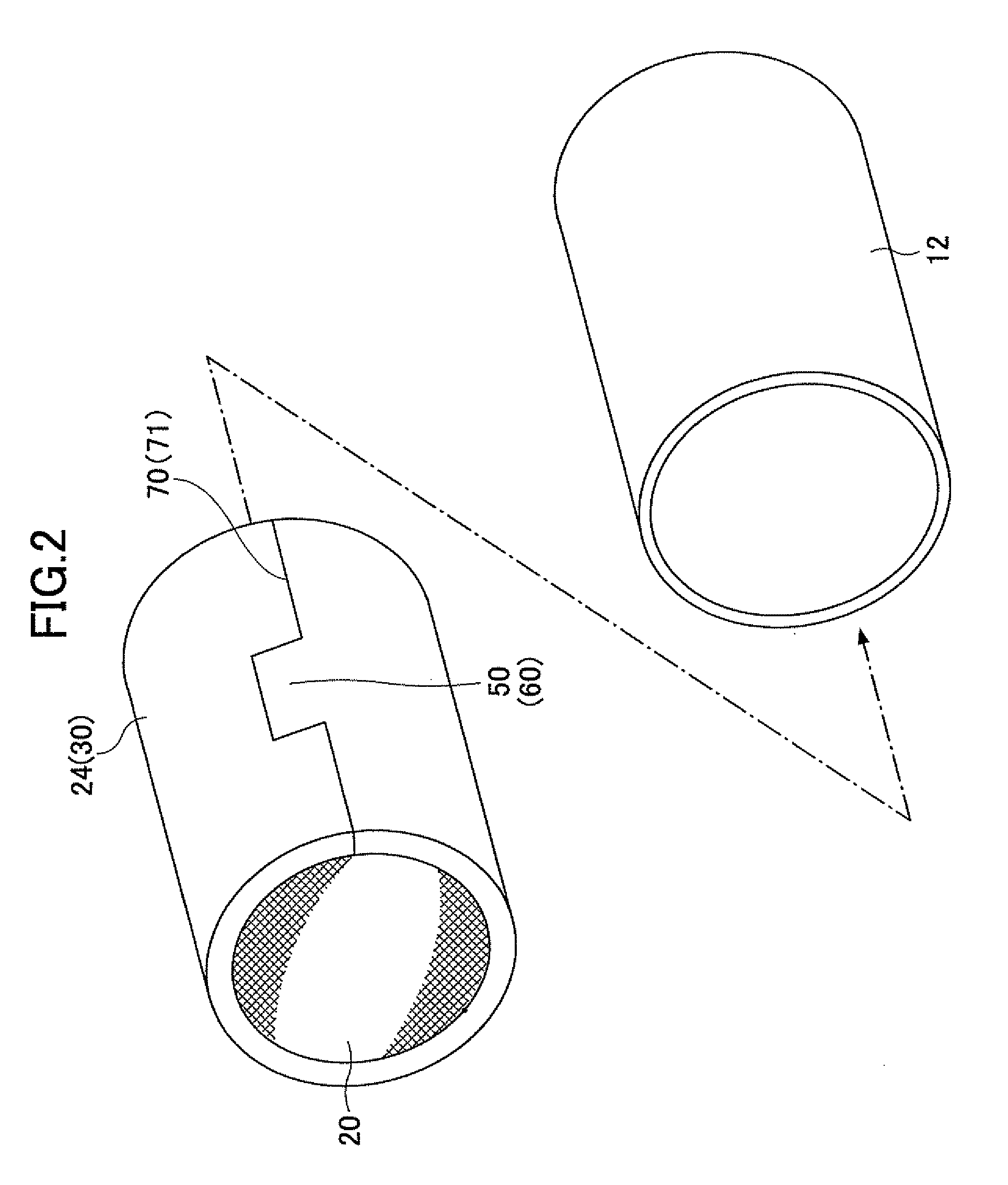Mat material, exhaust gas treating apparatus, and muffler
a technology of exhaust gas treatment and mufflers, which is applied in the direction of machines/engines, filtration separation, separation processes, etc., can solve the problems of major pollution and serious affecting the global environment, and achieve the effect of improving handleability
- Summary
- Abstract
- Description
- Claims
- Application Information
AI Technical Summary
Benefits of technology
Problems solved by technology
Method used
Image
Examples
example 1
[0092]A mat material was manufactured by the following procedure.
[0093]A silica sol was added to a basic aluminum chloride aqueous solution with an aluminum content of 70 g / l and Al / C=11.8 (atomic ratio) to achieve an alumina-based fiber composition of Al2O3:SiO2=72:28, thereby forming an alumina-based fiber precursor.
[0094]Then, an organic polymer such as polyvinyl alcohol was added to the alumina-based fiber precursor. The solution was further condensed to obtain a spinning solution, with which fiber spinning was performed by a blowing method. Thereafter, the alumina-based fiber precursor was folded and laminated to obtain an alumina-based fiber laminate sheet.
[0095]The laminate sheet was then subjected to a needling process which involved a pair of needle boards, each having a set of 50 needles per 100 cm2. These needle boards were disposed on either side of the laminate sheet, and moved up and down from either side of the laminate sheet substantially along the thickness directio...
example 2
[0098]A mat material according to Example 2 was manufactured by the same method as the foregoing Example 1. In Example 2, the penetration depth of the needle from each surface was set to be 9.5 mm. The basis weight of the mat material was 2000 g / cm2 and the density was 0.16 g / cm3. The thickness of the completed mat material was 12.7 mm, and the penetration depth of the needle trace was 9.5 mm for both the first and the second surfaces. Thus, the mat material of Example 2 belonged to Type III.
example 3
[0099]A mat material according to Example 3 was manufactured by the same method as the foregoing Example 1. In Example 3, the penetration depth of the needle on each surface was set to be 13.1 mm. The basis weight of the mat material was 2600 g / cm2, and the density was 0.15 g / cm3. The thickness of the completed mat material was 17.4 mm, and the penetration depth of the needle trace was 13.1 mm for both the first and the second surfaces. Thus, the mat material of Example 3 belonged to Type III.
PUM
| Property | Measurement | Unit |
|---|---|---|
| Thickness | aaaaa | aaaaa |
| Weight | aaaaa | aaaaa |
| Thickness | aaaaa | aaaaa |
Abstract
Description
Claims
Application Information
 Login to View More
Login to View More - R&D
- Intellectual Property
- Life Sciences
- Materials
- Tech Scout
- Unparalleled Data Quality
- Higher Quality Content
- 60% Fewer Hallucinations
Browse by: Latest US Patents, China's latest patents, Technical Efficacy Thesaurus, Application Domain, Technology Topic, Popular Technical Reports.
© 2025 PatSnap. All rights reserved.Legal|Privacy policy|Modern Slavery Act Transparency Statement|Sitemap|About US| Contact US: help@patsnap.com



